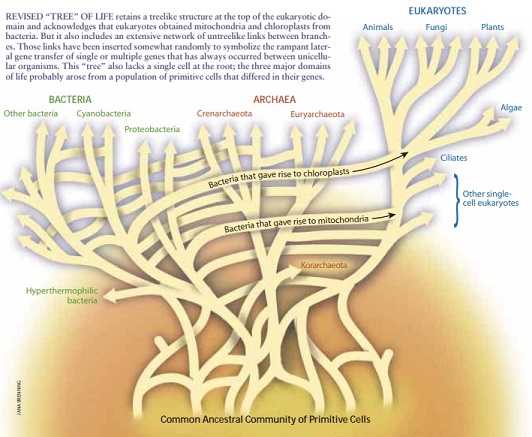Organisms: Difference between revisions
| Line 21: | Line 21: | ||
3. Wenke, Katrin, et al. “Belowground volatiles facilitate interactions between plant roots and soil organisms.” Shibboleth Authentication Request, Springer-Verlag, [https://link-springer-com.gate.lib.buffalo.edu/article/10.1007%2Fs00425-009-1076-2 link-springer-com.gate.lib.buffalo.edu/article/10.1007%2Fs00425-009-1076-2.] | 3. Wenke, Katrin, et al. “Belowground volatiles facilitate interactions between plant roots and soil organisms.” Shibboleth Authentication Request, Springer-Verlag, [https://link-springer-com.gate.lib.buffalo.edu/article/10.1007%2Fs00425-009-1076-2 link-springer-com.gate.lib.buffalo.edu/article/10.1007%2Fs00425-009-1076-2.] | ||
4. Qiao, Yuhui, et al. “Effects of biochar and Arbuscular mycorrhizae on bioavailability of potentially toxic elements in an aged contaminated soil.” Shibboleth Authentication Request, 28 Aug. 2015, www-sciencedirect-com.gate.lib.buffalo.edu/science/article/pii/S0269749115300233?_rdoc=1&_fmt=high&_origin=gateway&_docanchor=&md5=b8429449ccfc9c30159a5f9aeaa92ffb. | 4. Qiao, Yuhui, et al. “Effects of biochar and Arbuscular mycorrhizae on bioavailability of potentially toxic elements in an aged contaminated soil.” Shibboleth Authentication Request, 28 Aug. 2015, [https://www-sciencedirect-com.gate.lib.buffalo.edu/science/article/pii/S0269749115300233?_rdoc=1&_fmt=high&_origin=gateway&_docanchor=&md5=b8429449ccfc9c30159a5f9aeaa92ffb www-sciencedirect-com.gate.lib.buffalo.edu/science/article/pii/S0269749115300233?_rdoc=1&_fmt=high&_origin=gateway&_docanchor=&md5=b8429449ccfc9c30159a5f9aeaa92ffb.] | ||
Revision as of 21:35, 2 March 2018
Definitions
The word "Organism" comes from the word "Organ" and the suffix "-ism". In biologic terms, "Organ" refers to a grouping of tissues into a distinct structure, as a heart or kidney in animals or a leaf or stamen in plants, that performs a specialized task, whereas "-ism" is a suffix appearing in loanwords from Greek, where it was used to form action nouns from verbs. The term "Organism" itself has many different ways of being defined but is generally referred to as a form of life composed of mutually interdependent parts that maintain various vital processes.
History

Organisms range from basic, singular cells, to complex eukaryotes such as plants and animals. Around the time of Aristotle, scientists would figure out the genealogy of organisms simply by comparing their physical features to one another. This continued right up until the 1960's, at which time scientists started to create a universal phylogeny tree for every type of known organism. The tree began when two researchers, Emile Zuckerkandl and Linus Pauling of the California Institute of Technology, began basing ancestral organisms on genetic differences rather than physiology, making the relation of organisms much more precise. It was then that organisms were found to be divided up into two main groups, eukaryotes and prokaryotes. During the late 1970's, a scientist by the name of Carl R. Woese discovered that by using the SSU rRNA, small subunit ribosomal RNA, he could find the moment where organisms start to diverge and become separate entities. It was shortly after this discovery that Woese determined that not all prokaryotes could genetically be defined as bacteria, and so a third main group needed to be included, the archaea. These three main groups are still accepted today as the correct set of ancestral organisms that make up every other organism on the planet. However, it has recently been discovered that the original three groups somehow laterally share their genes, making all organisms a conglomerate of prokaryotes, archaea, and eukaryotes. It is currently believed that the current phylogeny "tree" is some sort of interlacing web without any one definite source of original life.
Subterranean
Microorganisms such as nematodes, paramecium, and bacteria, live within the soil and interact with plant organisms. Plants excrete volatile substances through their roots which are then received by the microorganisms. The microorganisms use these substances to gather information about their surroundings, and then produce their own volatile substances to communicate with each other. When the microorganisms receive the plant's substances, the microorganisms make their way over to the plant's roots to consume the extra carbon that the roots emit because the microorganisms can't obtain it on their own. Many different types of microorganisms can use the emitted carbon because the plant roots send it out by using multiple different chemical compounds, and some of those microorganisms will reciprocate by benefiting the plant. To benefit the plants, the microorganisms will use certain scents to dispose of excess carbon, stimulate growth, or inhibit the growth of other plants.
Arbuscular mycorrhizal fungi(AMF) is one of the many soil organisms that interact with plant roots. The AMF "purifies" the soil for the plants by binding any heavy metals to fungal hyphae, and combining them with glomalin, so that the plants are unable to take up the heavy metals that would otherwise be toxic to them. The sequestration of heavy metals gives the potential for the plant to increase its tolerance to elements that could be toxic to it. Other benefits that the arbuscular mycorrhizal fungi provide to plants include increased water and nutrient collection, and greater resistance to harmful microorganisms.
References
1."organism". Dictionary.com Unabridged. Random House, Inc. 18 Feb. 2018. <Dictionary.com http://www.dictionary.com/browse/organism>.
2. Doolittle, W. F. (2000), "Uprooting the tree of life" (PDF), Scientific American, 282 (6): 90–95, Bibcode:2000SciAm.282b..90D, doi:10.1038/scientificamerican0200-90, PMID 10710791, archived from the original (PDF) on 2011-01-31.
3. Wenke, Katrin, et al. “Belowground volatiles facilitate interactions between plant roots and soil organisms.” Shibboleth Authentication Request, Springer-Verlag, link-springer-com.gate.lib.buffalo.edu/article/10.1007%2Fs00425-009-1076-2.
4. Qiao, Yuhui, et al. “Effects of biochar and Arbuscular mycorrhizae on bioavailability of potentially toxic elements in an aged contaminated soil.” Shibboleth Authentication Request, 28 Aug. 2015, www-sciencedirect-com.gate.lib.buffalo.edu/science/article/pii/S0269749115300233?_rdoc=1&_fmt=high&_origin=gateway&_docanchor=&md5=b8429449ccfc9c30159a5f9aeaa92ffb.